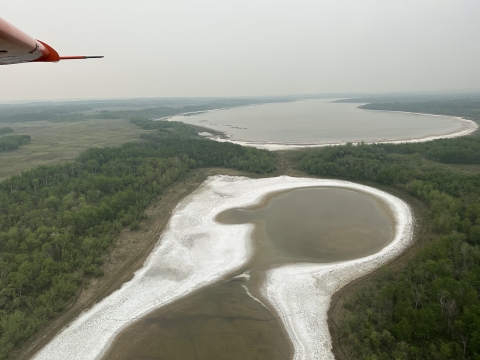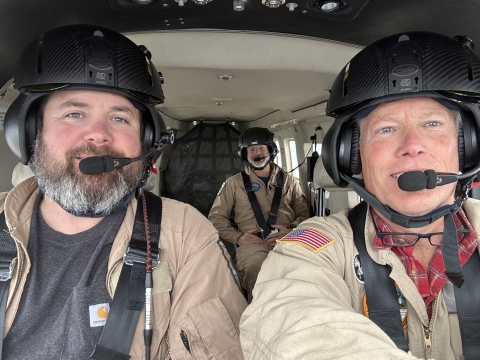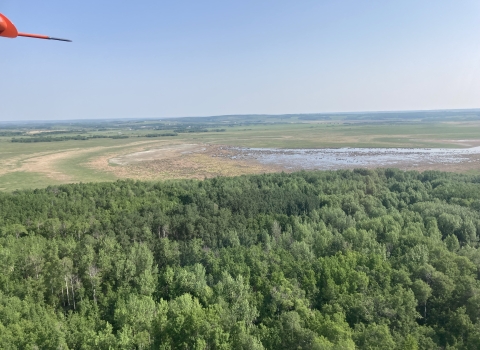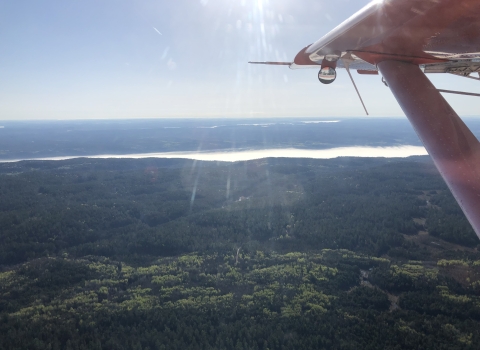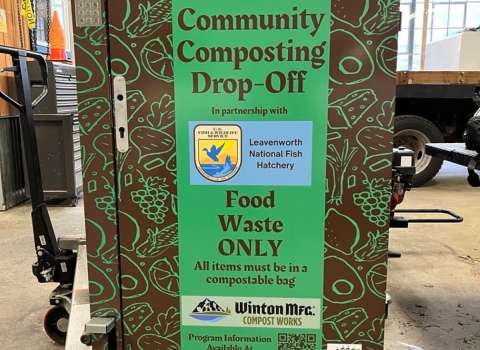We finished our last survey line in Montana and flew directly to Regina, Saskatchewan. It’s always nice to land and see the friendly faces of our long-time airport friends welcoming us back for another spring survey. On the flight up we saw that the southern part of the survey area was wetter than we’d seen it in many years. The habitat is not the best (most of the native prairie is gone), but amazingly the ducks are able to use remaining habitat to be somewhat productive. Northern pintails were especially present, but not in the numbers that we’ve seen in wetter years. I’d guess that some of them remained in the Dakotas to take advantage of the good wetland conditions in those states.
After we settled into the hotel, we headed out for some ground reconnaissance to see what social groupings looked like in the area: were ducks paired up or would we see single drakes? A lot can be determined about migration and nesting by what species are present or absent. Vegetation phenology (i.e., timing of leafout) was a couple weeks behind normal so trees and native shrubs were still dormant or just starting to bud. However, waterfowl social groupings looked good with mallards and Northern pintails (both early nesting species) showing signs of some nesting already happening – we observed single drakes sitting on wetlands, which typically indicates that a hen is nesting somewhere nearby. It’s also very useful to see what bird species use the wetlands that we will fly over. We have only 2-3 seconds to identify the species and sex of each duck on the wetland. If we got hung up on trying to identify a bird as you fly over and finally realized it’s a red-necked grebe, the wetland and ducks would be gone! By knowing not only the waterfowl, but the non-waterfowl species, we waste less time and can spend the other two seconds getting the mallard pair, pintail drake, coots two, gadwall two pairs and a spare (drake) and a wigeon pair. That’s why exposure on the ground and in the air is so valuable.
We saw fair to good waterfowl habitat in the southern and southwest grasslands, but conditions quickly deteriorated in the central and western grasslands near Kindersley, Saskatchewan. Severe drought conditions had dried up almost all the wetlands and these poor conditions continued into the western parklands.
The area already looked pretty bleak, but with the addition of smoke from the wildfires in Alberta and northern Saskatchewan it had an ominous appearance. The Parklands east of Saskatoon, while also abnormally dry, still had fair to good conditions for nesting and brood rearing.
With only two days left on the survey, we started looking at weather forecasts for the flight home and were getting excited to see family again after 3+ weeks on the road…and in the air! And then our run of luck with weather ran out. Fog, rain, or low ceilings…or sometimes all the above plagued us every day. Sometimes it would clear enough to allow us to get into the air, but only to find the survey transect shrouded in fog. After six poor weather days, we finally got the last stretch of transects flown and departed directly for Williston, North Dakota. We then made it to the Denver area where we all parted ways, relieved that we made it back before the thunderstorms started booming soon after our arrival!




